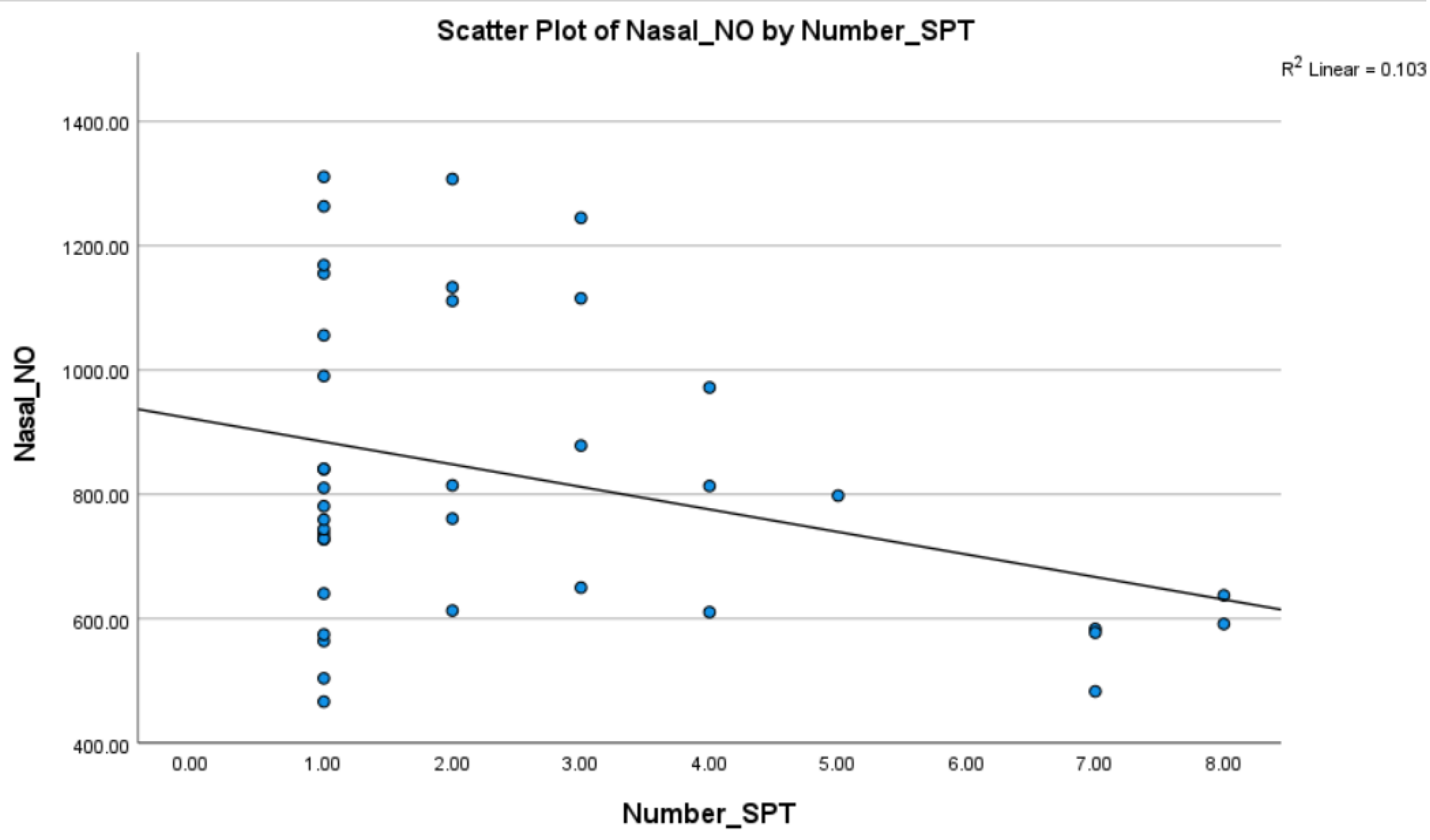Louca N, Damianou D, Kostea N, Kouis P, Yiallouros P, Pitsios C. Medicina. 2025; 61(3):516. https://doi.org/10.3390/medicina61030516
Abstract
Background and objectives: Increased levels of nitric oxide (NO) are produced in various inflammatory diseases like allergic asthma. Fractional exhaled NO has been studied as a biomarker of type 2 inflammation in asthma, while the use of nasal NO (nNO) as a diagnostic tool for allergic rhinitis (AR) is less established. In the present study, we investigated nNO as a potential biomarker for differentiating AR from nonallergic rhinitis (NAR). Materials and methods: Medical students were invited to complete a questionnaire on rhinitis symptoms.Individuals who reported nasal symptoms were invited to participate in the clinical phase of the study, which included considering the patient’s medical history, clinical examination, skin-prick tests (SPTs) for the 14 most relevant allergens in the region, and nNO measurement using the NIOX VERO portable nitric oxide analyzer. Informed consent was obtained at each stage of recruitment and clinical assessment. Results: Overall, 62 out of 122 volunteers recruited reported rhinitis symptoms and were investigated further with nNO measurements and SPTs. In total, 39 had SPT-confirmed AR, while 23 were classified as NAR subjects. Both nNO measurements and SPTs were performed on the same day, during the pollen season. The comparison of mean nNO concentrations (830 ± 247 ppb and 851 ± 373 in AR and NAR groups, respectively) showed no statistically significant difference. Conclusions: we concluded that nNO is not a reliable independent biomarker in the diagnosis of AR.

No comments:
Post a Comment